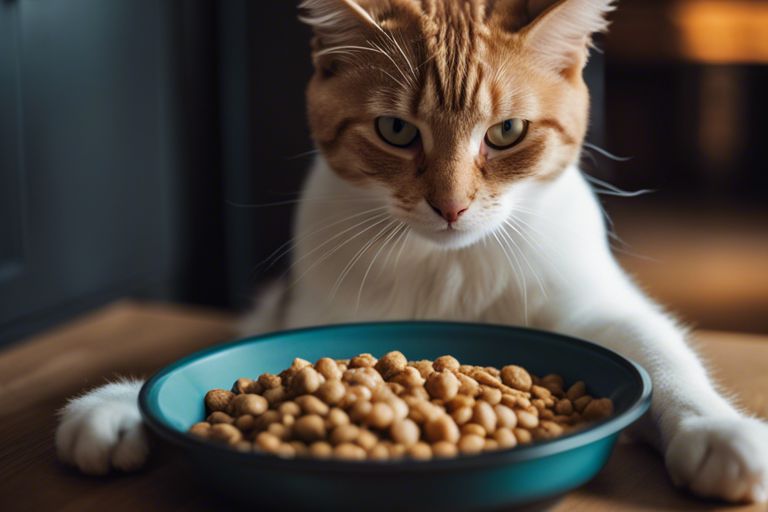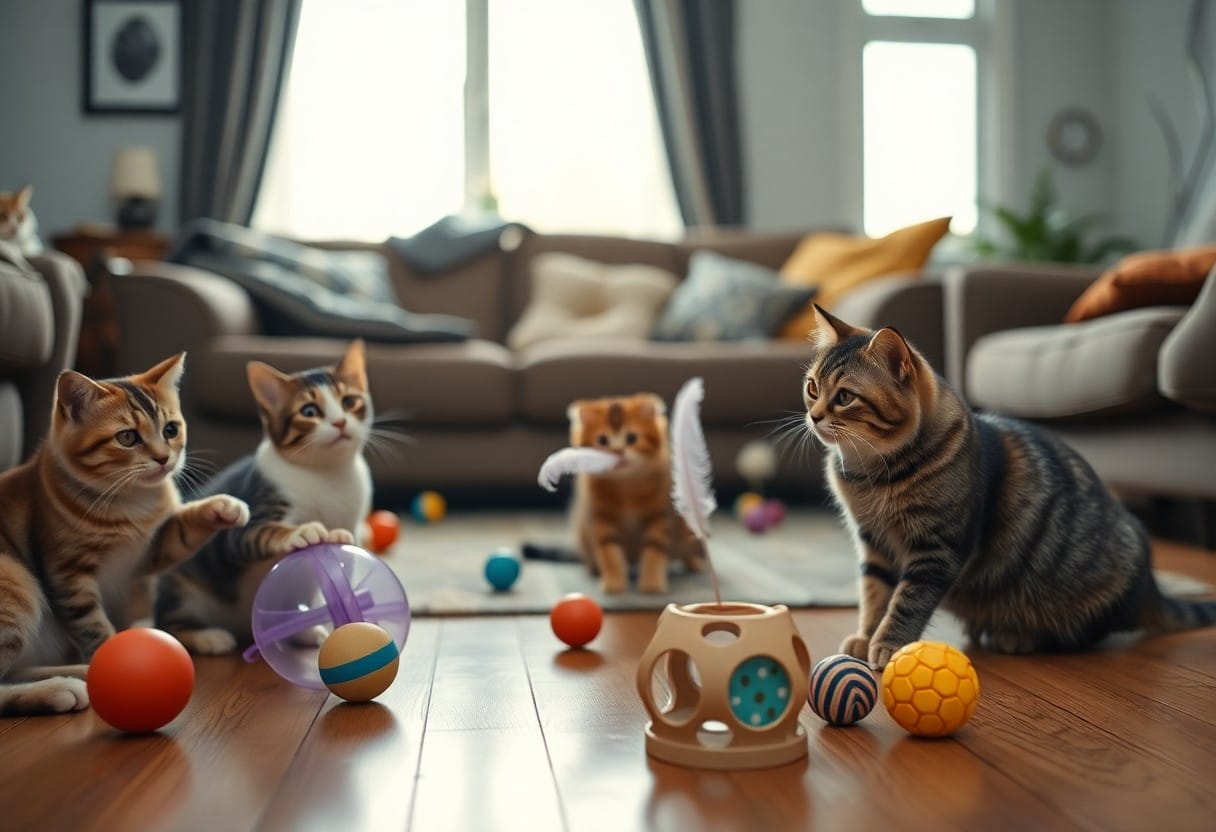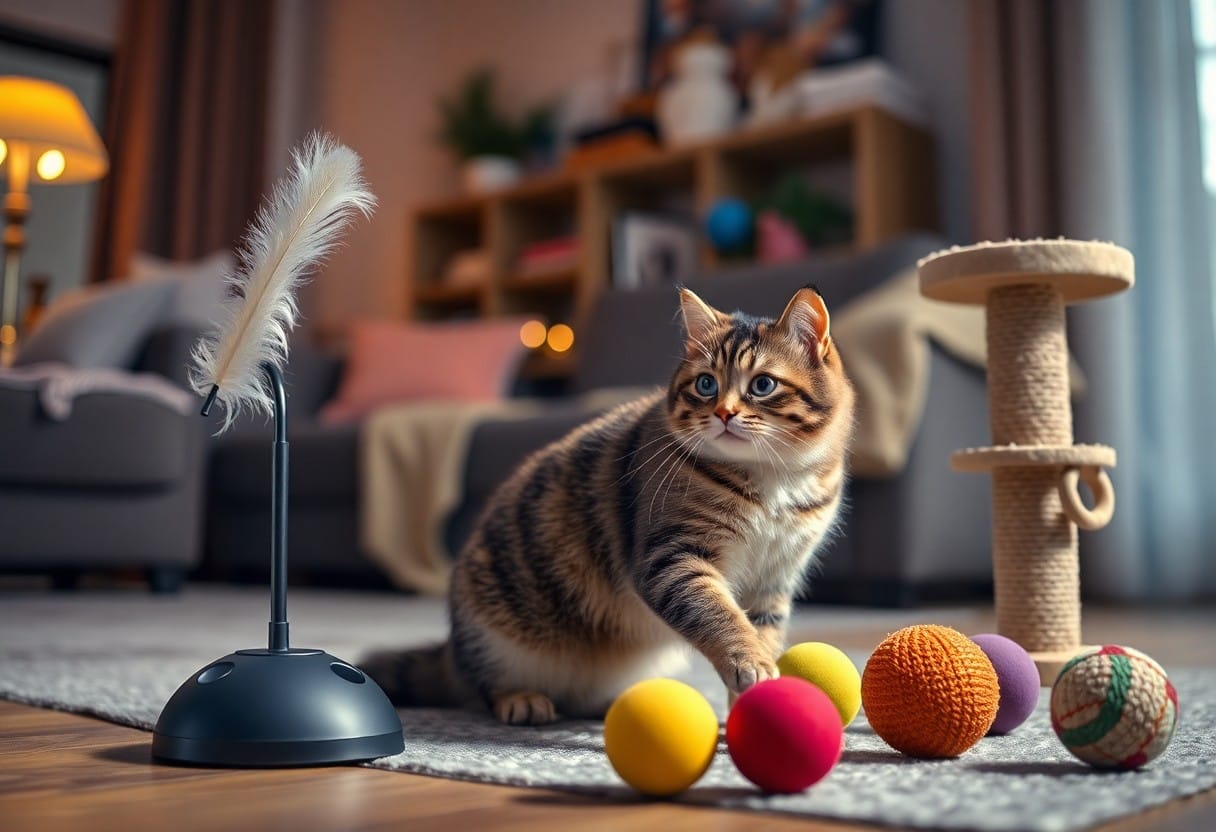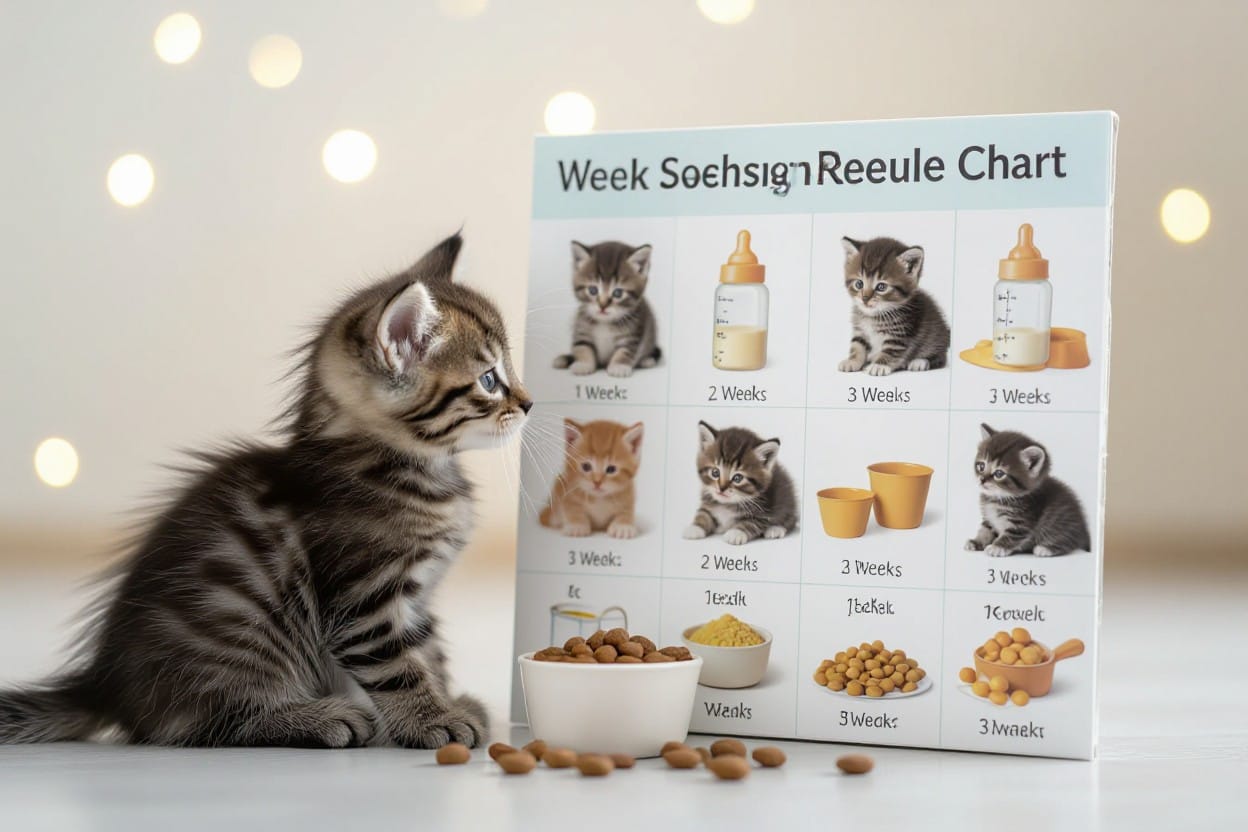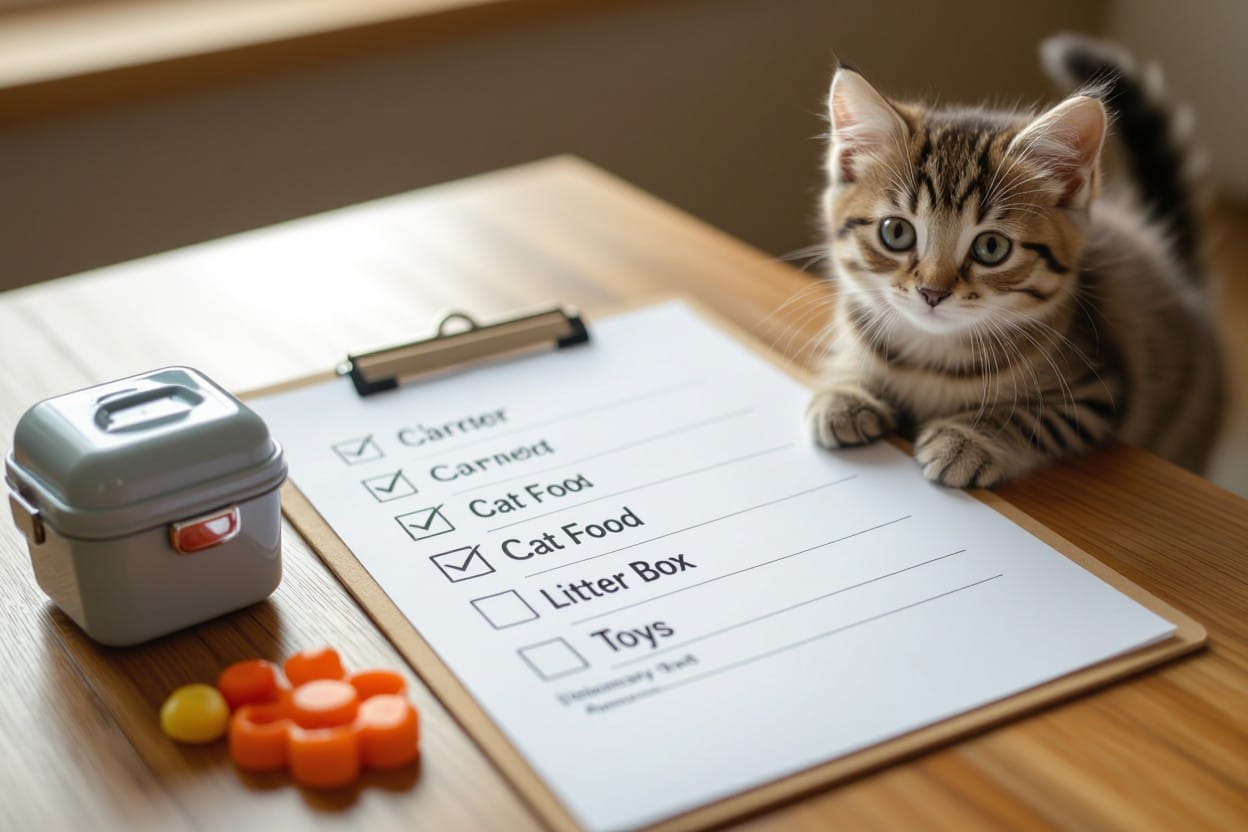You love your furry feline companion and want the best for them, including a healthy diet. But how do you know if your cat’s current diet is meeting their nutritional needs? In this blog post, we will discuss five warning signs that your cat’s diet may need a change. These signs will help you identify when it’s time to reassess their food and ensure they are getting the proper nutrients for a long and healthy life.
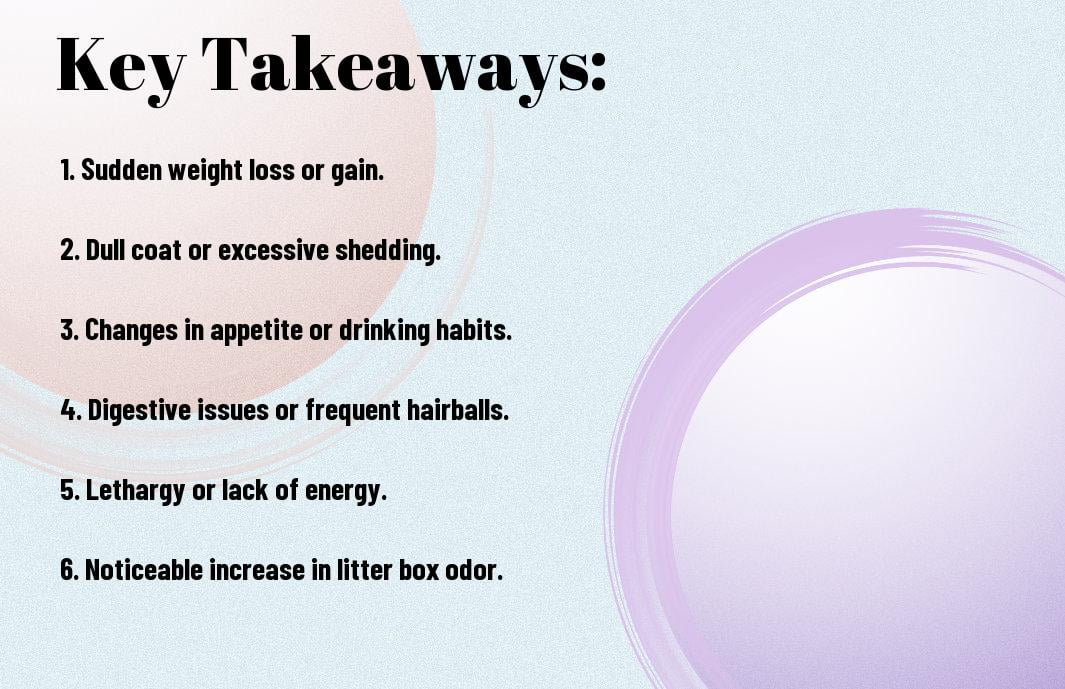
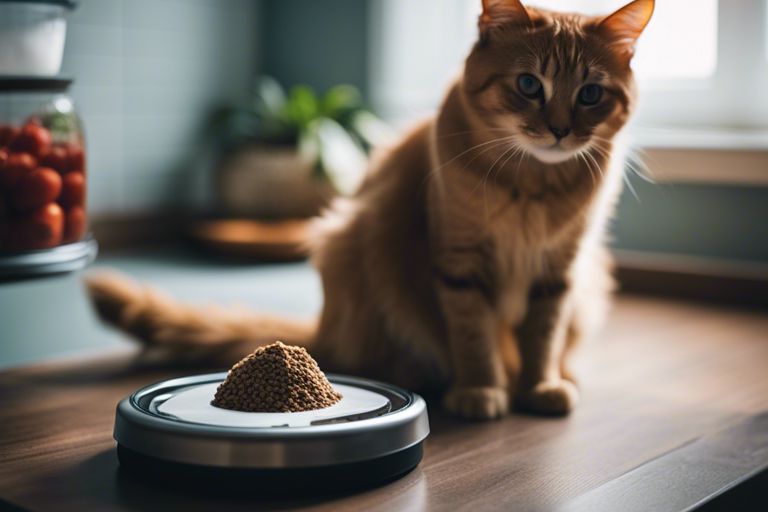
Sign 1: Weight Changes
Unexpected weight gain and its implications
Weight changes in cats can be a sign that their diet needs adjustment. Unexpected weight gain, if not due to a medical condition, may be an indication that your cat is consuming more calories than necessary. This could lead to obesity, which puts your cat at risk for various health issues such as diabetes, arthritis, and heart disease.
Sudden weight loss as a red flag
Implications of sudden weight loss in cats can be a cause for concern. It could signify an underlying health problem like hyperthyroidism, diabetes, or even cancer. Sudden weight loss can also be related to dental issues, making it uncomfortable for your cat to eat, leading to a decreased appetite and subsequent weight loss.
To address sudden weight loss in your cat, it’s crucial to consult with your veterinarian promptly. They can help determine the underlying cause and provide guidance on adjusting your cat’s diet to ensure they are receiving the appropriate nutrition to maintain a healthy weight.
Sign 2: Digestive Disturbances
The
Frequent vomiting or regurgitation
Regurgitation is a concerning sign that your cat’s diet may not be agreeing with them. If you notice your cat frequently bringing up undigested food shortly after eating, it could indicate a problem with their digestive system. This can be caused by various factors such as food allergies, sensitivities, or eating too quickly.
Diarrhea or constipation patterns
Disturbances in your cat’s stool, such as diarrhea or constipation, can be a red flag that their diet needs a change. Diarrhea can be a sign of an intolerance to certain ingredients in their food, while constipation can indicate a lack of fiber or hydration in their diet. It’s imperative to monitor your cat’s bathroom habits and consult with your veterinarian if you notice persistent issues.
In cases of severe diarrhea or constipation, it’s crucial to seek veterinary attention promptly to rule out any underlying health concerns that may be impacting your cat’s digestive system.
Sign 3: Coat and Skin Health
Many cat owners often overlook the importance of their feline friend’s coat and skin health when evaluating their dietary needs. A healthy cat should have a shiny, lustrous coat that is soft to the touch. If you notice any changes in your cat’s fur, it could be a sign that their diet needs a closer look.
Dull, lifeless fur
Lifeless fur that appears dull and dry may indicate that your cat is not getting the imperative nutrients they need for a healthy coat. A lack of fatty acids, vitamins, and minerals in their diet can lead to lackluster fur that is prone to breakage and shedding. Consider switching to a high-quality cat food that is specifically formulated to promote a healthy skin and coat.
Skin irritations and excessive scratching
One of the most evident signs that your cat’s diet may need a change is skin irritations and excessive scratching. If your cat is constantly grooming, biting, or scratching their skin, it could be due to allergies or sensitivities to certain ingredients in their food.
Skin irritations can also be caused by a deficiency in imperative fatty acids, which play a crucial role in maintaining healthy skin. Consult with your veterinarian to determine if your cat’s diet needs to be adjusted to address any skin issues they may be experiencing.
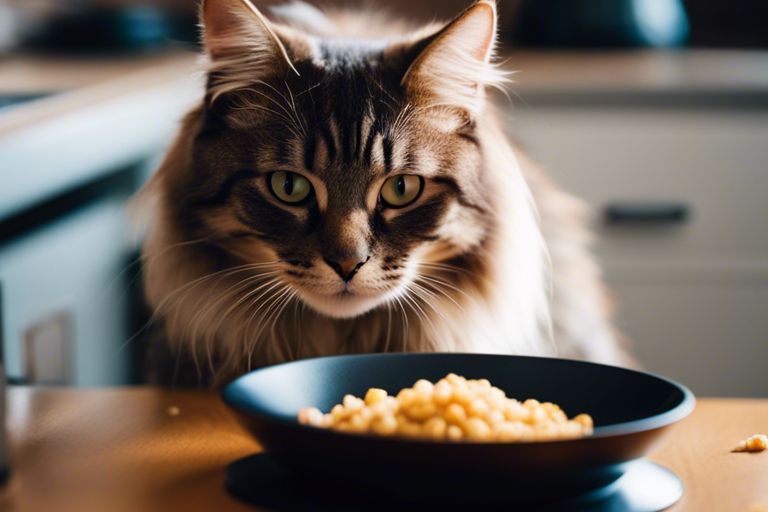
Sign 4: Behavioral Changes
Decreased energy levels and lethargy
Noticing a sudden drop in your cat’s energy levels and an increase in lethargy could be indicative of a problem with their diet. Cats are naturally active animals, so a lack of energy and enthusiasm for play could be a sign that they are not getting the necessary nutrients from their food.
Increased aggression or irritability
Increased aggression or irritability in your cat can be a red flag that their diet is not meeting their needs. Cats may exhibit this behavior if they are feeling undernourished or if they are experiencing digestive issues due to their current diet.
Aggression and irritability can also be linked to stress, which can be exacerbated by an inadequate diet. If you notice your cat becoming more aggressive or irritable, it is necessary to consult with your veterinarian to determine if a diet change is necessary.
Sign 5: Dental Health Issues
Bad breath and oral hygiene
All cat owners are likely familiar with the infamous smell of “fishy” cat breath. While this can be normal to some extent, consistently foul breath could indicate a more serious issue. Poor oral hygiene in cats can lead to a buildup of plaque and tartar, causing bad breath and potentially leading to gum disease or tooth decay.
Problems with eating or chewing food
An important indicator of your cat’s dental health is their ability to eat and chew their food. If your cat is having difficulty picking up or chewing food, it could be a sign of dental issues. Cats with dental problems may start avoiding hard food altogether, leading to weight loss and malnutrition.
It’s crucial to address dental issues promptly to prevent further complications in your cat’s overall health and well-being.
Sign of a bigger problem
These dental health issues could be signs of a larger health problem that needs addressing. If you notice any of these warning signs, it’s necessary to consult your veterinarian for proper evaluation and treatment.
Taking Action
Now that you’ve recognized the warning signs that your cat’s diet needs a change, it’s time to take action. Making adjustments to your cat’s diet should be done gradually and with careful consideration to ensure their health and well-being.
Consulting with a veterinarian
An vital first step in changing your cat’s diet is consulting with a veterinarian. They can provide valuable insight into your cat’s specific dietary needs and recommend the best course of action. Your vet can also rule out any underlying health issues that may be affecting your cat’s appetite or digestion.
Adjusting your cat’s diet: first steps
Adjusting your cat’s diet should be a gradual process to avoid any digestive upsets. Start by mixing small amounts of the new food with their current food and gradually increase the proportion of the new food over a period of 7-10 days. This will give your cat’s digestive system time to adjust to the new diet.
With any diet change, it’s vital to monitor your cat’s weight, appetite, and overall health. If you notice any concerning changes or if your cat is not adapting well to the new diet, consult with your veterinarian for further guidance.
Maintaining a Healthy Diet
The role of balanced nutrition
Once again, it cannot be stressed enough how crucial balanced nutrition is for your cat’s overall health and well-being. A diet that provides the right balance of protein, fats, carbohydrates, vitamins, and minerals is crucial for promoting healthy growth, supporting organ function, and boosting the immune system. By ensuring your cat’s diet is well-rounded and meets their nutritional needs, you can help prevent a wide range of health issues and keep them feeling their best.
Regular monitoring and adaptive feeding strategies
Feeding your cat the right food is just the first step in maintaining a healthy diet. Regular monitoring of their weight, body condition, and overall health is crucial for detecting any signs that their diet may need adjusting. By keeping a close eye on your cat’s physical appearance and behavior, you can make necessary changes to their feeding plan to ensure they are getting the nutrition they need. This may involve adjusting portion sizes, switching to a different type of food, or adding supplements to their diet.
It’s important to remember that your cat’s nutritional needs can change over time due to factors such as age, activity level, and health conditions. Consulting with your veterinarian regularly and being proactive in monitoring your cat’s diet will help you make informed decisions about their nutrition and ensure they are getting the best possible care.
Conclusion
The health and well-being of your cat are of utmost importance, and their diet plays a crucial role in ensuring they live a happy and healthy life. By paying attention to the warning signs that your cat’s diet may need a change, you can address any issues promptly and provide them with the nutrition they need to thrive.
Recall, any sudden changes in your cat’s behavior, appearance, or appetite should not be ignored. Consult with your veterinarian to discuss the best options for your cat’s diet, whether it be a different type of food, portion sizes, or feeding schedule. By being proactive and observant, you can make sure your furry friend is getting the proper nutrients they need to live a long and happy life.
FAQ
Q: What are the signs that indicate my cat’s diet needs a change?
A: The signs include weight gain or loss, dull coat, vomiting, diarrhea, and lack of energy. These are indicators that your cat’s current diet may not be providing the necessary nutrients.
Q: How often should I evaluate my cat’s diet?
A: It is recommended to evaluate your cat’s diet regularly, at least every 6 months. However, if you notice any sudden changes in your cat’s health or behavior, it may be necessary to evaluate their diet sooner.
Q: Should I consult a veterinarian before changing my cat’s diet?
A: Yes, it is always best to consult with a veterinarian before making any significant changes to your cat’s diet. They can provide valuable insight and recommendations based on your cat’s individual needs.
Q: What are some common mistakes pet owners make when feeding their cats?
A: Common mistakes include overfeeding, underfeeding, providing improper balance of nutrients, feeding table scraps, and not providing enough fresh water. These mistakes can lead to health issues and indicate the need for a diet change.
Q: How can I transition my cat to a new diet effectively?
A: To transition your cat to a new diet, mix the new food with the old food gradually over a period of 7-10 days. Start with a small amount of the new food and increase the ratio slowly. This helps prevent digestive upset and allows your cat to adjust to the new diet smoothly.
